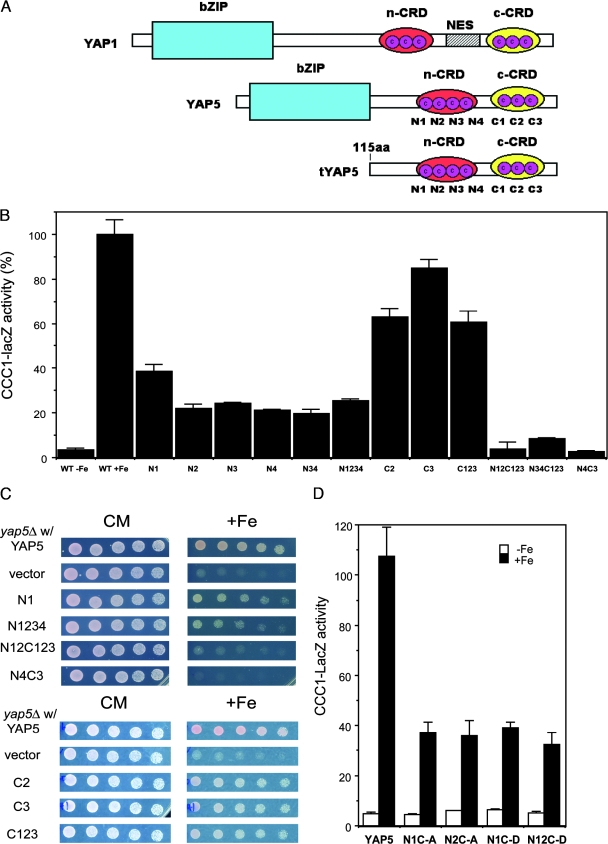FIG. 5.
Expression of CCC1 is dependent on the cysteines in the Yap5 CRD. (A) Comparison of the architectures of Yap1 and Yap5. The architecture of Yap1 is abstracted from data described previously (17, 24). Yap5 has two CRDs in which the cysteines are conserved in all species of Saccharomyces. The cysteines are numbered sequentially starting with the amino-terminal cysteine. A representation of the truncated form of Yap5 lacking the DNA binding domain is shown for comparison. n-CRD, N-terminal CRD; c-CRD, C-terminal CRD; aa, amino acids; NES, nuclear export sequence. (B) yap5Δ cells were transformed with plasmids expressing His-Yap5 in which the designated cysteines were mutated to alanines. The cells also contained a CCC1-lacZ reporter construct. The cells were grown in low-iron medium overnight and then incubated with iron for 2 h. Cells were harvested, β-galactosidase activity was determined, and activity was normalized for cell protein. WT, wild type. (C) yap5Δ cells were transformed with plasmids expressing either HIS-YAP5 or HIS-YAP5 in which the designated cysteines were mutated to alanines. Transformed cells were plated onto medium containing different concentrations of iron, and growth was assayed after 2 days. (D) yap5Δ cells containing a CCC1-lacZ reporter construct were transformed with a plasmid containing His-Yap5 in which cysteines in the amino-terminal CRD were mutated to alanine or aspartic acid. Transformed cells grown in low-iron medium were incubated with 500 μM iron for 2 h, and β-galactosidase activity was determined.

